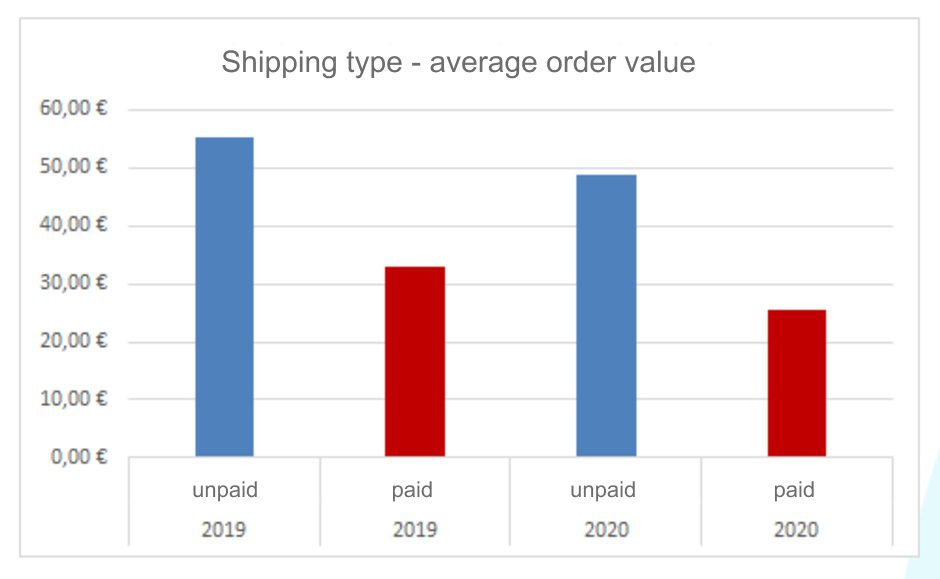The year-end accounts don’t show the profit you envisaged. A common reason for this is poor business pricing. What are you doing wrong and how can you increase your margin?
Table of Contents
Many clients who come to us have found themselves in a situation where an initially thriving business has ceased to deliver the desired results. They feel that everything is collapsing around them. It is precisely this moment that is crucial for the future of the entire business.
We know from experience that the pricing of the business is often underestimated. The margin is usually based only on gut feelings, and the online store can be financially burdened by shipping costs. How can you overcome this?
1. The pricing of shipping and products is not one and the same – split them up!
Your business does not come as a whole, divide it into small sections. That’s the only way to find out where the error is. In particular, shipping costs are often overlooked. Logistics is a section that must be considered separately. You can easily find out if it really works for you. Is it generating a profit or are you breaking even?
In the worst possible scenario, shipping is a cost. And that’s a problem. Shipping should not become a financial burden. There may be a variety of solutions:
- reassessment of delivery pricing;
- not being afraid to set a higher price for oversized or unusual goods; oroffering more attractive bundles of a single set of goods (such as a triple pack of socks).

How to set up free delivery
Customers need to be motivated by free delivery. The amount needed should be neither high nor low. How can you tell if you have set it right?
Take note of the average order amount with which customers get free delivery. Ideally, it should be just above the specified threshold.
Example: Below, you will find a table of the average order value according to the type of courier. Free shipping is set at 33 euros. In 2019, customers who took advantage of this service far exceeded the set amount.
This means that they were not motivated by free delivery, but simply wanted to buy.
In contrast, customers who paid for delivery tended to spend just below this threshold. This implies that they were not interested enough in free delivery to consider adding another product to their basket.

2. Increase the margins in your shopping basket
Your profit is undermined particularly by single unit orders. Limit them. They usually have a low margin, especially with cheaper products. We recommend you consider the following:
- different bundles of products that are interrelated (a bundle of ingredients for a specific recipe),
- multipacks of the same kind of product (socks, underwear, etc.),
- displaying related products during the shopping process (offer a rain cover or changing bag alongside a pushchair).

Bundled products increase your margin while reducing packaging and shipping costs.
You can do the same for seasonal products, during sales (such as Black FridayWhat is Black Friday and when was it created? Find out why it is the biggest e-commerce event right after Christmas now. More) and over the Christmas period.
3. Does the margin grow in line with sales?
If the number of units sold is growing, so should your business. For example, if you sell 50% more t-shirts, will your profit grow as well? Unfortunately, sometimes it doesn’t quite work that way.
This could be due to poorly adjusted costs or low-margin products.
If this is the case, you may sell a high volume of products, the turnover looks promising, but in the end the profit barely covers the costs. Think about the fact that out of the margin, you need to invest in advertising, cover staff expenses and, of course, you also want to earn some money.
We recommend that you calculate your margin not only based on a single product, but also per whole order.
4. Pricing driven by data
Pricing is purely a matter of data and thorough financial analysis. In our experience, those who set pricing according to data right from the start achieved success sooner. When making a business plan, don’t follow your intuition, follow the numbers.
Moreover, rebuilding an established but poorly set-up online store is more complicated than taking these fundamentals into account right from the start. The true reflection of success is the year-end financial report. Are you profitable?

5. Delegate and get ready for success
Count on growth right from the very beginning. You need to be prepared to respond quickly to changes, hire the necessary manpower and implement changes to software if needed. We experienced a situation where we’d set up all the pricing and campaigns for a client, but at Christmastime we had to stop everything.
Our changes had such an impact that the client was no longer able to dispatch.
Correct pricing is only the beginning
If you feel like you can relate to some of these examples, or if you’re struggling to increase profits and set margins, you’re not alone. We regularly help clients handle these situations. That’s why we’ve also developed a separate service for online stores – financial analysis.
As part of this service, we advise clients on how to keep their online store’s finances healthy and how to generate higher profits. We have confidence in data, and if you have confidence in data too, together we will kick-start your business into being profitable again.






